L’interfaccia grafica.
L’Interfaccia Grafica (GUI) dà accesso a tutte le
funzionalità di gestione della biblioteca e di conversione degli e-book
nei vari formati. Il primo passo per utilizzare calibre prevede
l’aggiunta di libri alla biblioteca dal tuo disco rigido. calibre
cercherà di reperire automaticamente i metadati dai libri e di
aggiungerli al proprio database interno. Una volta nel database potrai
effettuare alcune Azioni
su di essi, tra cui la conversione da un formato all’altro, il
trasferimento su un dispositivo di lettura, la visualizzazione sul tuo
computer e la modifica dei metadati. Quest’ultima azione consente, tra
gli altri, la modifica di copertina, descrizione e tag. Nota che calibre
crea una copia dei file che vi sono aggiunti. I file originali non
vengono modificati.
L’interfaccia è divisa in diverse sezioni:

La barra delle azioni fornisce comode scorciatoie alle funzioni più
usate. Se fai clic con il tasto destro sui pulsanti, puoi eseguire
varianti dell’azione predefinita. Tieni presente che la barra delle
azioni apparirà leggermente diversa se hai un lettore di e-book
collegato al tuo computer.
 L’azione Aggiungi libri ha sette varianti accessibili cliccando con il tasto destro sul pulsante.
L’azione Aggiungi libri ha sette varianti accessibili cliccando con il tasto destro sul pulsante.
Add books from a single folder: Opens a file chooser dialog and allows you to specify which books in a folder should be added. This action is context sensitive, i.e. it depends on which catalog you have selected. If you have selected the Library,
books will be added to the library. If you have selected the e-book
reader device, the books will be uploaded to the device, and so on.
Add books from folders and sub-folders: Allows
you to choose a folder. The folder and all its sub-folders are scanned
recursively, and any e-books found are added to the library. You can
choose whether to have calibre add all files present in a single folder
to a single book record or multiple book records. calibre assumes that
each folder contains a single book. All e-book files in a folder are
assumed to be the same book in different formats. This action is the
inverse of the Save to disk action, i.e. you can Save to disk,
delete the books and re-add them in single book per folder mode, with
no lost information except for the date (this assumes you have not
changed any of the setting for the Save to disk action).
Add multiple books from archive (ZIP/RAR):
Allows you to add multiple e-books that are stored inside the selected
ZIP or RAR files. It is a convenient shortcut that avoids having to
first unzip the archive and then add the books via one of the above two
options.
Add empty book (Book Entry with no formats):
Allows you to create a blank book record. This can be used to then
manually fill out the information about a book that you may not have yet
in your collection.
Aggiungi con ISBN: Permette di aggiungere uno o più libri inserendo il loro codice ISBN.
Add files to selected book records: Allows you to add or update the files associated with an existing book in your library.
Add an empty file to selected book records: Allows you to add an empty file of the specified format to the selected book records.
The Add books action can read metadata from a wide variety of e-book formats. In addition, it tries to guess metadata from the filename.
See the Estrazione dei metadati dai nomi dei file section, to learn how to configure this.
Per aggiungere un formato ad un libro già esistente, è possibile fare una delle seguenti tre cose:
Trascina il file sul pannello dei Dettagli del Libro, sulla parte destra della finestra principale
Fai clic con il tasto destro sul pulsante Aggiungi libri e scegli Aggiungi file ai libri selezionati.
Clicca sul pulsante Aggiungi libri nella zona in alto a destra della finestra Modifica metadati, accessibile con l’azione Modifica metadati.
 E-books can be converted from a number of formats into whatever format your e-book reader prefers.
Many e-books available for purchase will be protected by Digital Rights Management (DRM) technology.
calibre will not convert these e-books. It is easy to remove the DRM from many formats, but as this may be illegal,
you will have to find tools to liberate your books yourself and then use calibre to convert them.
E-books can be converted from a number of formats into whatever format your e-book reader prefers.
Many e-books available for purchase will be protected by Digital Rights Management (DRM) technology.
calibre will not convert these e-books. It is easy to remove the DRM from many formats, but as this may be illegal,
you will have to find tools to liberate your books yourself and then use calibre to convert them.
For most people, conversion should be a simple one-click affair. If you want to learn more about the conversion process, see Conversione E-book.
L’azione Converti libri ha tre varianti, accessibili cliccando con il tasto destro sul pulsante.
Converti individualmente: Ti permette di specificare le opzioni per personalizzare la conversione di ognuno degli e-book selezionati.
Converti in gruppo: Ti permette di specificare le opzioni una volta sola per convertire un certo numero di e-book in gruppo.
Create a catalog of the books in your calibre library:
Allows you to generate a complete listing of the books in your library,
including all metadata,
in several formats such as XML, CSV, BiBTeX, EPUB and MOBI. The catalog
will contain all the books currently showing in the library view.
This allows you to use the search features to limit the books to be
catalogued. In addition, if you select multiple books using the mouse,
only those books will be added to the catalog. If you generate the
catalog in an e-book format such as EPUB, MOBI or AZW3,
the next time you connect your e-book reader the catalog will be
automatically sent to the device.
For more information on how catalogs work, read the Creazione di cataloghi AZW3 • EPUB • MOBI.
 The View action displays the book in an e-book viewer program.
calibre has a built-in viewer for many e-book formats. For other formats it
uses the default operating system application. You can configure which formats
should open with the internal viewer via
Preferences → Interface → Behavior. If a book has more than one
format, you can view a particular format by doing a right-click on the button.
The View action displays the book in an e-book viewer program.
calibre has a built-in viewer for many e-book formats. For other formats it
uses the default operating system application. You can configure which formats
should open with the internal viewer via
Preferences → Interface → Behavior. If a book has more than one
format, you can view a particular format by doing a right-click on the button.
 L’azione Invia al dispositivo ha otto varianti, accessibili cliccando con il tasto destro sul pulsante.
L’azione Invia al dispositivo ha otto varianti, accessibili cliccando con il tasto destro sul pulsante.
Send to main memory: The selected books are transferred to the main memory of the e-book reader.
Send to card (A): The selected books are transferred to the storage card (A) on the e-book reader.
Send to card (B): The selected books are transferred to the storage card (B) on the e-book reader.
Send specific format to: The selected books are transferred to the selected storage location on the device, in the format that you specify.
Espelli dispositivo: Scollega il dispositivo da calibre.
Set default send to device action: Allows you to
specify which of the options, 1 through 5 above or 7 below, will be the
default action when you click the main button.
Send and delete from library: The selected books are transferred to the selected storage location on the device and then deleted from the Library.
Fetch Annotations (experimental): Transfers
annotations you may have made on an e-book on your device to the
comments metadata of the book in the calibre library.
You can control the file name and folder structure of files sent to the device by setting up a template in
Preferences → Import/export → Sending books to devices. Also see Il linguaggio dei modelli di calibre.
 The Fetch news
action downloads news from various websites and converts it into an
e-book that can be read on your e-book reader. Normally, the newly
created e-book is added to your e-book library, but if an e-book reader
is connected at the time the download finishes, the news is also
uploaded to the reader automatically.
The Fetch news
action downloads news from various websites and converts it into an
e-book that can be read on your e-book reader. Normally, the newly
created e-book is added to your e-book library, but if an e-book reader
is connected at the time the download finishes, the news is also
uploaded to the reader automatically.
The Fetch news action uses simple
recipes (10-15 lines of code) for each news site. To learn how to create
recipes for your own news sources, see Aggiunta del tuo sito di notizie preferito.
The Fetch news action has three variations, accessed by doing a right-click on the button.
Schedule news download: Allows you to schedule
the download of your selected news sources from a list of hundreds
available. Scheduling can be set individually for each news source you
select and the scheduling is flexible allowing you to select specific
days of the week or a frequency of days between downloads.
Add a custom news source: Allows you to create a
simple recipe for downloading news from a custom news site that you
wish to access. Creating the recipe can be as simple as specifying an
RSS news feed URL, or you can be more prescriptive by creating
Python-based code for the task. For more information see Aggiunta del tuo sito di notizie preferito.
Download all scheduled news sources: Causes calibre to immediately begin downloading all news sources that you have scheduled.
 The Library
action allows you to create, switch between, rename or remove a
Library. calibre allows you to create as many libraries as you wish.
You could, for instance, create a fiction library, a non-fiction
library, a foreign language library, a project library, or any structure
that suits your needs. Libraries are the highest organizational
structure within calibre. Each library has its own set of books, tags,
categories and base storage location.
The Library
action allows you to create, switch between, rename or remove a
Library. calibre allows you to create as many libraries as you wish.
You could, for instance, create a fiction library, a non-fiction
library, a foreign language library, a project library, or any structure
that suits your needs. Libraries are the highest organizational
structure within calibre. Each library has its own set of books, tags,
categories and base storage location.
Switch/create library…: Allows you to; a)
connect to a pre-existing calibre library at another location, b) create
an empty library at a new location or, c) move the current library to a
newly specified location.
Quick switch: Allows you to switch between libraries that have been registered or created within calibre.
Rename library: Allows you to rename a Library.
Pick a random book: Chooses a random book in the library for you
Remove library: Allows you to unregister a library from calibre.
Export/import all calibre data: Allows you to either export calibre data for migration to a new computer or import previously exported data.
<library name>: Actions 7, 8 etc… give you
immediate switch access between multiple libraries that you have
created or attached to. This list contains only the 5 most frequently
used libraries. For the complete list, use the Quick Switch menu.
Library maintenance: Allows you to check the current library for data consistency issues and restore the current library’s database from backups.
Nota
Metadata about your e-books, e.g. title, author, and tags, is stored
in a single file in your calibre library folder called metadata.db. If
this file gets corrupted (a very rare event), you can lose the metadata.
Fortunately, calibre automatically backs up the metadata for every
individual book in the book’s folder as an OPF file. By using the
Restore database action under Library Maintenance described above, you
can have calibre rebuild the metadata.db file from the individual OPF
files for you.
You can copy or move books between different libraries (once you have
more than one library setup) by right clicking on the book and
selecting the action Copy to library.
 The Device
action allows you to view the books in the main memory or storage cards
of your device, or to eject the device (detach it from calibre).
This icon shows up automatically on the main calibre toolbar when you
connect a supported device. You can click on it to see the books on your
device. You can also drag and drop books from your calibre library onto
the icon to transfer them to your device. Conversely, you can drag and
drop books from your device onto the library icon on the toolbar to
transfer books from your device to the calibre library.
The Device
action allows you to view the books in the main memory or storage cards
of your device, or to eject the device (detach it from calibre).
This icon shows up automatically on the main calibre toolbar when you
connect a supported device. You can click on it to see the books on your
device. You can also drag and drop books from your calibre library onto
the icon to transfer them to your device. Conversely, you can drag and
drop books from your device onto the library icon on the toolbar to
transfer books from your device to the calibre library.
 L’azione Salva su disco ha cinque varianti, accessibili cliccando con il tasto destro sul pulsante.
L’azione Salva su disco ha cinque varianti, accessibili cliccando con il tasto destro sul pulsante.
Save to disk: Saves the selected books to disk organized in folders. The folder structure looks like:
Author_(sort)
Title
Book Files
You can control the file name and folder structure of files saved to disk by setting up a template in
Preferences → Import/export → Saving books to disk. Also see Il linguaggio dei modelli di calibre.
Save to disk in a single folder: Saves the selected books to disk in a single folder.
For 1. and 2., all available formats, as well as metadata, are stored
to disk for each selected book. Metadata is stored in an OPF file.
Saved books can be re-imported to the library without any loss of
information by using the Add books action.
Save only *<your preferred>* format to disk:
Saves the selected books to disk in the folder structure as shown in
(1.) but only in your preferred e-book format. You can set your
preferred format in Preferences → Interface → Behaviour → Preferred output format
Save only *<your preferred>* format to disk in a single folder:
Saves the selected books to disk in a single folder but only in your
preferred e-book format. You can set your preferred format in Preferences → Interface → Behaviour → Preferred output format
Save single format to disk…: Saves the selected
books to disk in the folder structure as shown in (1.) but only in the
format you select from the popup list.
 The Connect/share
action allows you to manually connect to a device or folder on your
computer. It also allows you to set up your calibre library for access
via a web browser or email.
The Connect/share
action allows you to manually connect to a device or folder on your
computer. It also allows you to set up your calibre library for access
via a web browser or email.
The Connect/share action has four variations, accessed by doing a right-click on the button.
Connect to folder: Allows you to connect to any
folder on your computer as though it were a device and use all the
facilities calibre has for devices with that folder. Useful if your
device cannot be supported by calibre but is available as a USB disk.
Start Content server: Starts calibre’s built-in
web server. When started, your calibre library will be accessible via a
web browser from the Internet (if you choose). You can configure how
the web server is accessed by setting preferences at Preferences → Sharing → Sharing over the net
Setup email based sharing of books: Allows
sharing of books and news feeds by email. After setting up email
addresses for this option, calibre will send news updates and book
updates to the entered email addresses. You can configure how calibre
sends email by setting preferences at Preferences → Sharing → Sharing books by email.
Once you have set up one or more email addresses, this menu entry will
be replaced by menu entries to send books to the configured email
addresses.
 The Remove books action deletes books permanently, so use it with care. It is context sensitive, i.e. it depends on which catalog you have selected. If you have selected the Library,
books will be removed from the library. If you have selected the e-book
reader device, books will be removed from the device. To remove only a
particular format for a given book use the Modifica metadati action. Remove books also has five variations which can be accessed by doing a right-click on the button.
The Remove books action deletes books permanently, so use it with care. It is context sensitive, i.e. it depends on which catalog you have selected. If you have selected the Library,
books will be removed from the library. If you have selected the e-book
reader device, books will be removed from the device. To remove only a
particular format for a given book use the Modifica metadati action. Remove books also has five variations which can be accessed by doing a right-click on the button.
Remove selected books: Allows you to permanently remove all books that are selected in the book list.
Remove files of a specific format from selected books…: Allows you to permanently remove e-book files of a specified format from books that are selected in the book list.
Remove all formats from selected books, except…: Allows you to permanently remove e-book files of any format except a specified format from books that are selected in the book list.
Remove all formats from selected books: Allows you to permanently remove all e-book files from books that are selected in the book list. Only the metadata will remain.
Remove covers from selected books: Allows you to permanently remove cover image files from books that are selected in the book list.
Remove matching books from device: Allows you to remove e-book files from a connected device that match the books that are selected in the book list.
Nota
Note that when you use Remove books to delete books from your calibre library, the book record is permanently deleted, but the files are placed into the Recycle Bin/Trash. This allows you to recover the files if you change your mind.
 The Preferences
action allows you to change the way various aspects of calibre work. It
has four variations, accessed by doing a right-click on the button.
The Preferences
action allows you to change the way various aspects of calibre work. It
has four variations, accessed by doing a right-click on the button.
Preferences: Allows you to change the way various aspects of calibre work. Clicking the button also performs this action.
Run Welcome wizard: Allows you to start the Welcome wizard which appeared the first time you started calibre.
Get plugins to enhance calibre: Opens a new
window that shows plugins for calibre. These plugins are developed by
third parties to extend calibre’s functionality.
Restart in debug mode: Allows you to enable a
debugging mode that can assist the calibre developers in solving
problems you encounter with the program. For most users this should
remain disabled unless instructed by a developer to enable it.

A catalog is a collection of books. calibre can manage two types of different catalogs:
Library: This is a collection of books stored in your calibre library on your computer.
Device: This is a collection of books stored in
your e-book reader. It will be available when you connect the reader to
your computer.
Many operations, such as adding books, deleting, viewing, etc., are context sensitive. So, for example, if you click the View button when you have the Device catalog selected, calibre will open the files on the device to view. If you have the Library catalog selected, files in your calibre library will be opened instead.
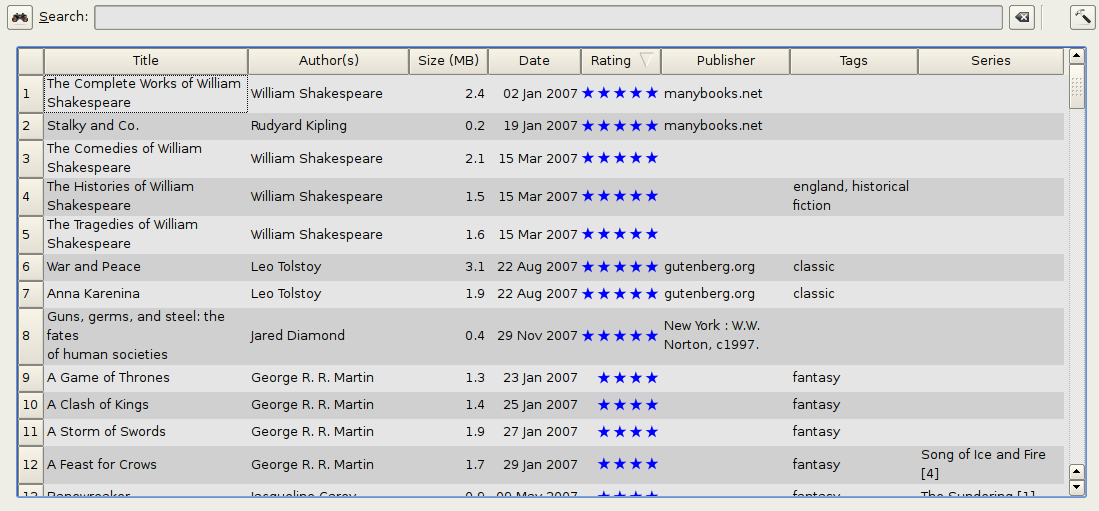
The Search & Sort section allows you to perform several powerful actions on your book collections.
You can sort them by title, author, date, rating, etc. by
clicking on the column titles. You can also sub-sort, i.e. sort on
multiple columns. For example, if you click on the title column and then
the author column, the book will be sorted by author and then all the
entries for the same author will be sorted by title.
You can search for a particular book or set of books using the Search bar. More on that below.
You can quickly and conveniently edit metadata by selecting the entry you want changed in the list and pressing the E key.
You can perform Azioni on sets of books. To select multiple books you can either:
You can configure which fields you want displayed by using the Preferenze dialog.
You can search all the metadata by entering search terms in the Search bar. Searches are case insensitive. For example:
Asimov Foundation format:lrf
This will match all books in your library that have Asimov and Foundation in their metadata and
are available in the LRF format. Some more examples:
author:Asimov and not series:Foundation
title:"The Ring" or "This book is about a ring"
format:epub publisher:feedbooks.com
Searches are by default “contains”. An item matches if the search string appears anywhere in the indicated metadata.
Two other kinds of searches are available: equality search and search using regular expressions.
Equality searches are indicated by prefixing the search string with an equals sign (=). For example, the query
tag:"=science" will match «science», but not «science fiction» or «hard science». Regular expression searches are
indicated by prefixing the search string with a tilde (~). Any Python-compatible regular expression
can
be used. Note that backslashes used to escape special characters in
regular expressions must be doubled because single backslashes will be
removed during query parsing. For example, to match a literal
parenthesis you must enter \\(. Regular expression searches are “contains” searches unless the expression contains anchors.
Should you need to search for a string with a leading equals or tilde, prefix the string with a backslash.
Enclose search strings with quotes («) if the string contains parenthesis or spaces. For example, to search
for the tag Science Fiction you would need to search for tag:"=science fiction". If you search for
tag:=science fiction you will find all books with the tag “science” and containing the word “fiction” in any
metadata.
You can build advanced search queries easily using the Advanced search dialog accessed by
clicking the button  .
.
Available fields for searching are: tag, title, author, publisher, series, series_index, rating, cover,
comments, format, identifiers, date, pubdate, search, size, vl and custom columns. If a device is plugged in, the ondevice field becomes available, when searching the calibre library view. To find the search name (actually called the lookup name) for a custom column, hover your mouse over the column header in the library view.
The syntax for searching for dates is:
pubdate:>2000-1 Will find all books published after Jan, 2000
date:<=2000-1-3 Will find all books added to calibre before 3 Jan, 2000
pubdate:=2009 Will find all books published in 2009
If the date is ambiguous, the current locale is used for date comparison. For example, in an mm/dd/yyyy
locale 2/1/2009 is interpreted as 1 Feb 2009. In a dd/mm/yyyy locale it is interpreted as 2 Jan 2009. Some
special date strings are available. The string today translates to today’s date, whatever it is. The
strings yesterday and thismonth (or the translated equivalent in the current language) also work.
In addition, the string daysago (also translated) can be used to compare to a date some number of days ago.
For example:
date:>10daysago
date:<=45daysago
To avoid potential problems with translated strings when using a non-English version of calibre, the strings _today, _yesterday, _thismonth, and _daysago are always available. They are not translated.
You can search for books that have a format of a certain size like this:
size:>1.1M Will find books with a format larger than 1.1MB
size:<=1K Will find books with a format smaller than 1KB
Dates and numeric fields support the relational operators = (equals), > (greater than), >=
(greater than or equal to), < (less than), <= (less than or equal to), and != (not equal to).
Rating fields are considered to be numeric. For example, the search rating:>=3 will find all books rated 3
or higher.
You can search for the number of items in multiple-valued fields such as tags. These searches begin with the character #, then use the same syntax as numeric fields. For example, to find all books with more than 4 tags use tags:#>4. To find all books with exactly 10 tags use tags:#=10.
Series indices are searchable. For the standard series, the search name is “series_index”. For
custom series columns, use the column search name followed by _index. For example, to search the indices for a
custom series column named #my_series, you would use the search name #my_series_index.
Series indices are numbers, so you can use the relational operators described above.
The special field search is used for saved searches. So if you save a search with the name
«My spouse’s books» you can enter search:"My spouse's books" in the Search bar to reuse the saved
search. More about saving searches below.
The special field vl is used to search for books in a Virtual library. For
example, vl:Read will find all the books in the Read Virtual library. The search
vl:Read and vl:"Science Fiction" will find all the books that are in both the Read and
Science Fiction Virtual libraries. The value following vl: must be the name of a
Virtual library. If the Virtual library name contains spaces then surround it with quotes.
You can search for the absence or presence of a field using the special «true» and «false» values. For example:
cover:false will give you all books without a cover
series:true will give you all books that belong to a series
comments:false will give you all books with an empty comment
format:false will give you all books with no actual files (empty records)
Yes/no custom columns are searchable. Searching for false, empty, or blank will find all books
with undefined values in the column. Searching for true will find all books that do not have undefined
values in the column. Searching for yes or checked will find all books with Yes in the column.
Searching for no or unchecked will find all books with No in the column. Note that the words yes, no, blank, empty, checked and unchecked are translated; you can use either the current language’s equivalent word or the English word. The words true and false and the special values _yes, _no, and _empty are not translated.
Hierarchical items (e.g. A.B.C) use an extended syntax to match
initial parts of the hierarchy. This is done by adding a period between
the exact match indicator (=) and the text. For example, the query tags:=.A will find the tags A and A.B, but will not find the tags AA or AA.B. The query tags:=.A.B will find the tags A.B and A.B.C, but not the tag A.
Identifiers (e.g., ISBN, DOI, LCCN, etc.) also use an extended syntax. First, note that an identifier has the form type:value, as in isbn:123456789.
The extended syntax permits you to specify independently which type and
value to search for. Both the type and the value parts of the query can
use equality, contains, or regular expression matches. Examples:
identifiers:true will find books with any identifier.
identifiers:false will find books with no identifier.
identifiers:123 will search for books with any type having a value containing 123.
identifiers:=123456789 will search for books with any type having a value equal to 123456789.
identifiers:=isbn: and identifiers:isbn:true will find books with a type equal to ISBN having any value
identifiers:=isbn:false will find books with no type equal to ISBN.
identifiers:=isbn:123 will find books with a type equal to ISBN having a value containing 123.
identifiers:=isbn:=123456789 will find books with a type equal to ISBN having a value equal to 123456789.
identifiers:i:1 will find books with a type containing an i having a value containing a 1.
You can search using a template in the Il linguaggio dei modelli di calibre instead of a
metadata field. To do so you enter a template, a search type, and the value to
search for. The syntax is:
template: (the template) #@#: (search type) : (the value)
The template is any valid calibre template language template. The search
type must be one of t (text search), d (date search), n (numeric
search), or b (set/not set (boolean)). The value is whatever you want.
It can use the special operators described above for the various search types.
You must quote the entire search string if there are spaces anywhere in it.
Esempi:
You can build template search queries easily using the Advanced
search dialog accessed by clicking the button  . You can test templates on
specific books using the calibre Template tester. This can be added
to the toolbars or menus via Preferences → Toolbars & menus. It can
also be assigned a keyboard shortcut via Preferences → Shortcuts.
. You can test templates on
specific books using the calibre Template tester. This can be added
to the toolbars or menus via Preferences → Toolbars & menus. It can
also be assigned a keyboard shortcut via Preferences → Shortcuts.
calibre allows you to save a frequently used search under a special
name and then reuse that search with a single click. To do this, create
your search either by typing it in the Search bar or using the Tag
browser. Then type the name you would like to give to the search in the
Saved Searches box next to the Search bar. Click the plus icon next to
the saved searches box to save the search.
Now you can access your saved search in the Tag browser under Saved
searches. A single click will allow you to reuse any arbitrarily complex
search easily, without needing to re-create it.
A Virtual library is a way to pretend that your calibre library has
only a few books instead of its full collection. This is an excellent way to
partition your large collection of books into smaller, manageable chunks. To
learn how to create and use Virtual libraries, see the tutorial:
Biblioteche Virtuali.
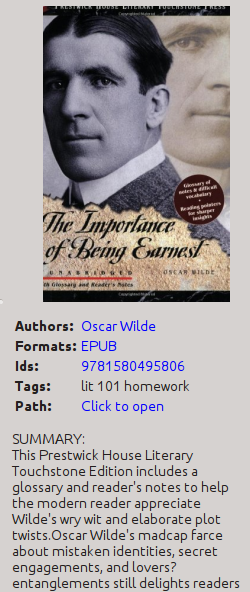
The Book details display shows the cover and all the metadata for the currently
selected book. It can be hidden via the Layout button in the lower
right corner of the main calibre window. The author names shown in the Book
details panel are click-able, they will by default take you to the Wikipedia
page for the author. This can be customized by right clicking on the author
name and selecting Manage this author.
Similarly, if you download metadata for the book, the Book details panel will
automatically show you links pointing to the web pages for the book on Amazon,
WorldCat, etc. from where the metadata was downloaded.
You can right click on individual e-book formats in the Book details panel to
delete them, compare them to their original versions, save them to disk, open
them with an external program, etc.
You can change the cover of the book by simply drag and dropping an
image onto the Book details panel. If you wish to edit the cover image in
an external program, simply right click on it and choose Open with.
You can also add e-book files to the current book by drag and dropping the files
onto the Book details panel.
Double clicking the Book details panel will open it up in a separate popup
window.
Finally, you can customize exactly what information is displayed in the Book
details panel via Preferences → Interface → Look & feel → Book details.
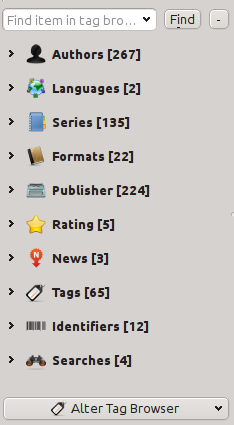
The Tag browser allows you to easily browse your collection by
Author/Tags/Series/etc. If you click on any item in the Tag browser, for
example the author name Isaac Asimov, then the list of books to the
right is restricted to showing books by that author. You can click on
category names as well. For example, clicking on «Series» will show you
all books in any series.
The first click on an item will restrict the list of books to those
that contain or match the item. Continuing the above example, clicking
on Isaac Asimov will show books by that author. Clicking again on the
item will change what is shown, depending on whether the item has
children (see sub-categories and hierarchical items below). Continuing
the Isaac Asimov example, clicking again on Isaac Asimov will restrict
the list of books to those not by Isaac Asimov. A third click will
remove the restriction, showing all books. If you hold down the Ctrl or Shift keys and click on multiple items, then restrictions based on multiple items are created. For example you could hold Ctrl
and click on the tags History and Europe for finding books on European
history. The Tag browser works by constructing search expressions that
are automatically entered into the Search bar. Looking at what the Tag
browser generates is a good way to learn how to construct basic search
expressions.
Items in the Tag browser have their icons partially colored. The
amount of color depends on the average rating of the books in that
category. So for example if the books by Isaac Asimov have an average of
four stars, the icon for Isaac Asimov in the Tag browser will be 4/5th
colored. You can hover your mouse over the icon to see the average
rating.
The outer-level items in the Tag browser, such as Authors and Series, are called categories. You can create your own categories, called User categories, which are useful for organizing items. For example, you can use the User categories editor (click the Configure button at the lower-left of the Tag browser and choose Manage authors, tags, etc → User categories) to create a User category called Favorite Authors,
then put the items for your favorites into the category. User
categories can have sub-categories. For example, the User category Favorites.Authors is a sub-category of Favorites. You might also have Favorites.Series, in which case there will be two sub-categories under Favorites. Sub-categories can be created by right-clicking on a User category, choosing Add sub-category to…, and entering the sub-category name; or by using the User categories editor by entering names like the Favorites example above.
- You can search User categories in the same way as built-in
categories, by clicking on them. There are four different searches
cycled through by clicking:
«everything matching an item in the category» indicated by a single green plus sign.
«everything matching an item in the category or its sub-categories» indicated by two green plus signs.
«everything not matching an item in the category» shown by a single red minus sign.
«everything not matching an item in the category or its sub-categories» shown by two red minus signs.
It is also possible to create hierarchies inside some of the text
categories such as tags, series, and custom columns. These hierarchies
show with the small triangle, permitting the sub-items to be hidden. To
use hierarchies of items in a category, you must first go to Preferences → Interface → Look & feel
and enter the category name(s) into the «Categories with hierarchical
items» field. Once this is done, items in that category that contain
periods will be shown using the small triangle. For example, assume you
create a custom column called «Genre» and indicate that it contains
hierarchical items. Once done, items such as Mystery.Thriller and
Mystery.English will display as Mystery with the small triangle next to
it. Clicking on the triangle will show Thriller and English as
sub-items. See Managing subgroups of books, for example «genre» for more information.
Hierarchical items (items with children) use the same four “click-on”
searches as User categories. Items that do not have children use two of
the searches: «everything matching» and «everything not matching».
You can drag and drop items in the Tag browser onto User categories
to add them to that category. If the source is a User category, holding
the Shift key while
dragging will move the item to the new category. You can also drag and
drop books from the book list onto items in the Tag browser; dropping a
book on an item causes that item to be automatically applied to the
dropped books. For example, dragging a book onto Isaac Asimov will set
the author of that book to Isaac Asimov. Dropping it onto the tag
History will add the tag History to the book’s tags.
You can easily find any item in the Tag browser by clicking the
search button at the lower-right corner. In addition, you can right
click on any item and choose one of several operations. Some examples
are to hide it, rename it, or open a «Manage x» dialog that allows you
to manage items of that kind. For example, the «Manage Authors» dialog
allows you to rename authors and control how their names are sorted.
You can control how items are sorted in the Tag browser via the Configure
button at the lower-left of the Tag browser. You can choose to sort by
name, average rating or popularity (popularity is the number of books
with an item in your library; for example, the popularity of Isaac
Asimov is the number of books in your library by Isaac Asimov).
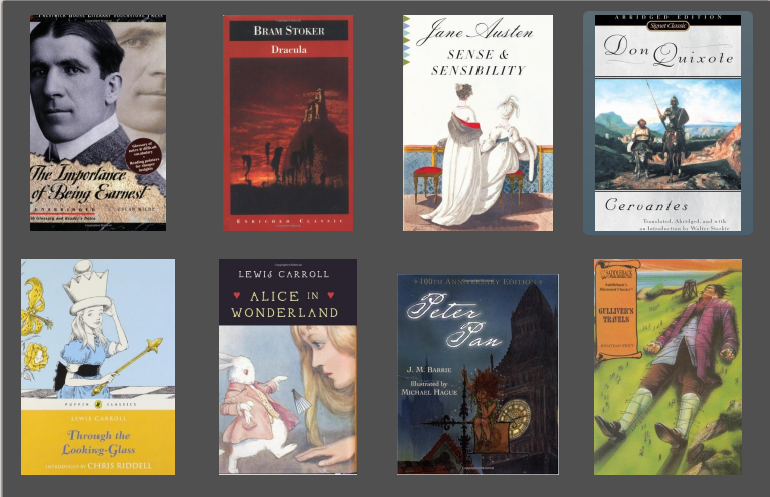
You can have calibre display a grid of book covers instead of a list of books,
if you prefer to browse your collection by covers instead. The Cover
grid is activated by clicking the Layout button in the bottom
right corner of the main calibre window. You can customize the cover sizes and
the background of the Cover grid via
Preferences → Interface → Look & feel → Cover grid. You can even have
calibre display any specified field under the covers, such as title or authors
or rating or a custom column of your own devising.

In addition to the Cover grid described above, you can also have calibre display
covers in the single row. This is activated via the Layout button in the lower right
corner of the main window. In Preferences → Interface → Look & feel → Cover
browser you can change the number of covers displayed, and even have the
Cover browser display itself in a separate popup window.
Sometimes you want to select a book and quickly get a list of books
with the same value in some category (authors, tags, publisher, series,
etc.) as the currently selected book, but without changing the current
view of the library. You can do this with Quickview. Quickview opens
either a second window or a panel in the book list showing the list of
books matching the value of interest. For example, assume you want to
see a list of all the books with the one or more of the authors of the
currently-selected book. Click in the author cell you are interested in
and press the “Q” key or click the Quickview icon in the Layout
section of the calibre window. A window or panel will open with all the
authors for that book on the left, and all the books by the selected
author on the right.
- Some example Quickview usages: quickly seeing what other books:
have some tag(s) applied to the currently selected book,
are in the same series as the current book
have the same values in a custom column as the current book
are written by one of the same authors of the current book
share values in a custom column
There are two choices for where the Quickview information appears:
It can open «undocked»: on top of the calibre window and will stay open until you explicitly close it.
It can open «docked»: as a panel in the book list section of the calibre main window.
You can move the window from docked to undocked as desired using the «Dock/Undock» button.
The Quickview panel can be left open permanently, in which case it
follows movements on the book list. For example, if you click in the
calibre library view on a category column (tags, series, publisher,
authors, etc.) for a book, the Quickview window contents will change to
show you in the left-hand side panel the values in that category for the
selected book (e.g., the tags for that book). The first item in that
list will be selected, and Quickview will show you on the right-hand
side panel all the books in your library that use that value. Click on
an different value in the left-hand panel to see the books with that
different value.
Double-click on a book in the Quickview window to select that book in
the library view. This will also change the items display in the
QuickView window (the left-hand panel) to show the items in the
newly-selected book.
Shift- or Ctrl-
double-click on a book in the Quickview window to open the edit
metadata dialog on that book in the calibre window. The edited book will
be Quickview’ed when you close the edit metadata dialog.
You can see if a column can be Quickview’ed by hovering your mouse
over the column heading and looking at the tooltip for that heading. You
can also know by right-clicking on the column heading to see of the
«Quickview» option is shown in the menu, in which case choosing that
Quickview option is equivalent to pressing “Q” in the current cell.
Options (in Preferences → Look & feel → Quickview):
Respect (or not) the current Virtual library. If checked then
Quickview shows only books in the current Virtual library. Default:
respect Virtual libraries
Change the Quickview window contents when the column is changed
on the book list using the cursor keys. Default: don’t follow changes
made with cursor keys
Change the column being «quickview’ed» when a cell in the
Quickview window is double-clicked. Otherwise the book is changed but
the column being examined is not. Default: change the column
Change the column being «quickview’ed» to the current column when
the return key is pressed in the Quickview panel. Otherwise the book is
changed but the column being examined is not. Default: change the
column
Choose which columns are shown in the Quickview window/panel.

The Jobs panel shows the number of currently running jobs. Jobs are
tasks that run in a separate process. They include converting e-books
and talking to your reader device. You can click on the jobs panel to
access the list of jobs. Once a job has completed you can see a detailed
log from that job by double-clicking it in the list. This is useful to
debug jobs that may not have completed successfully.
calibre has several keyboard shortcuts to save you time and mouse
movement. These shortcuts are active in the book list view (when you’re
not editing the details of a particular book), and most of them affect
the title you have selected. The calibre E-book viewer has its own
shortcuts which can be customised by clicking the Preferences button in the viewer.
Nota
Note: The calibre keyboard shortcuts do not require a modifier key
(Command, Option, Control, etc.), unless specifically noted. You only
need to press the letter key, e.g. E to edit.
Keyboard shortcuts for the main calibre program
Scorciatoia da tastiera |
Azione |
|---|
F2 (Enter in macOS) |
Edit the metadata of the currently selected field in the book list. |
A |
Aggiungi libri |
Shift+A |
Add formats to the selected books |
C |
Convert selected books |
D |
Invia al dispositivo |
Del |
Rimuovi i libri selezionati |
E |
Modifica i metadati dei libri selezionati |
G |
Ottieni libri |
I |
Mostra i dettagli del libro |
K |
Modifica indice |
M |
Unisci i record selezionati |
Alt+M |
Unisci i record selezionati, mantenendo gli originali |
O |
Apri la cartella contenente |
P |
Pulisci libri |
S |
Salva su disco |
T |
Modifica libro |
V |
Leggi |
Shift+V |
Visualizza l’ultimo libro letto |
Alt+V/Cmd+V in macOS |
Leggi un formato specifico |
Alt+Shift+J |
Mostra/nascondi l’elenco dei lavori |
Alt+Shift+B |
Mostra/nascondi il Navigatore delle copertine |
Alt+Shift+D |
Mostra/nascondi il pannello Dettagli libro |
Alt+Shift+T |
Mostra/nascondi il Navigatore dei Tag |
Alt+Shift+G |
Mostra/nascondi la Griglia delle copertine |
Alt+A |
Mostra libri dello stesso autore del libro corrente |
Alt+T |
Mostra libri con gli stessi tag del libro corrente |
Alt+P |
Mostra libri dello stesso editore del libro corrente |
Alt+Shift+S |
Mostra libri della stessa serie del libro corrente |
/, Ctrl+F |
Posiziona il cursore nella Barra di Ricerca |
Shift+Ctrl+F |
Apri la finestra di Ricerca Avanzata |
Shift+Alt+F |
Mostra/nascondi la Barra di Ricerca |
Esc |
Cancella la ricerca corrente |
Shift+Esc |
Attiva l’elenco dei libri |
Ctrl+Esc |
Abbandona la Biblioteca virtuale |
Alt+Esc |
Cancella la restrizione aggiuntiva |
Ctrl+* |
Crea una Biblioteca Virtuale temporanea basata sulla ricerca corrente |
Ctrl+Right |
Seleziona la scheda di Biblioteca Virtuale successiva |
Ctrl+Left |
Seleziona la scheda di Biblioteca Virtuale precedente |
N oppure F3 |
Trova il libro successivo che corrisponde alla ricerca corrente
(funziona solo se l’evidenziazione dei risultati è attivata nelle
preferenze di ricerca) |
Shift+N oppure Shift+F3 |
Trova il libro precedente che corrisponde alla ricerca corrente
(funziona solo se l’evidenziazione dei risultati è attivata nelle
preferenze di ricerca) |
Ctrl+D |
Scarica metadati e copertine |
Ctrl+R |
Riavvia calibre |
Ctrl+Shift+R |
Riavvia calibre in modalità debug |
Shift+Ctrl+E |
Aggiungi libri vuoti a calibre |
Ctrl+M |
Marca/rimuovi marcatura dai libri selezionati |
Q |
Apri il pannello Quickview per visualizzare i libri con serie/tag/ecc. collegati |
Shift+Q |
Sposta il focus sul pannello Quickview |
Shift+S |
Esegui una ricerca nel pannello Quickview |
F5 |
Riapplica l’ordinamento corrente |
Ctrl+Q |
Esci da calibre |
X | Attiva/disattiva lo scorrimento automatico dell’elenco dei libri |


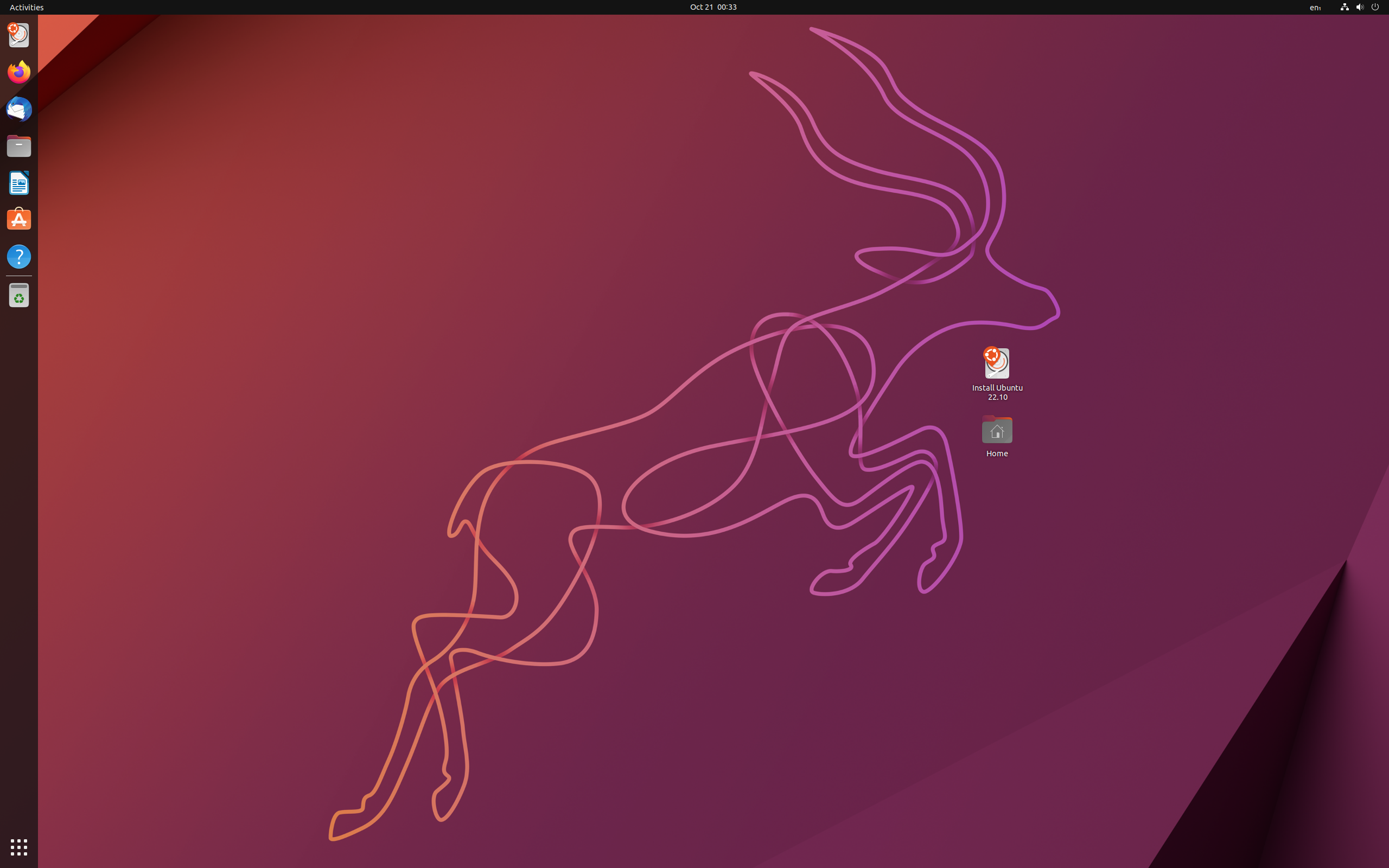

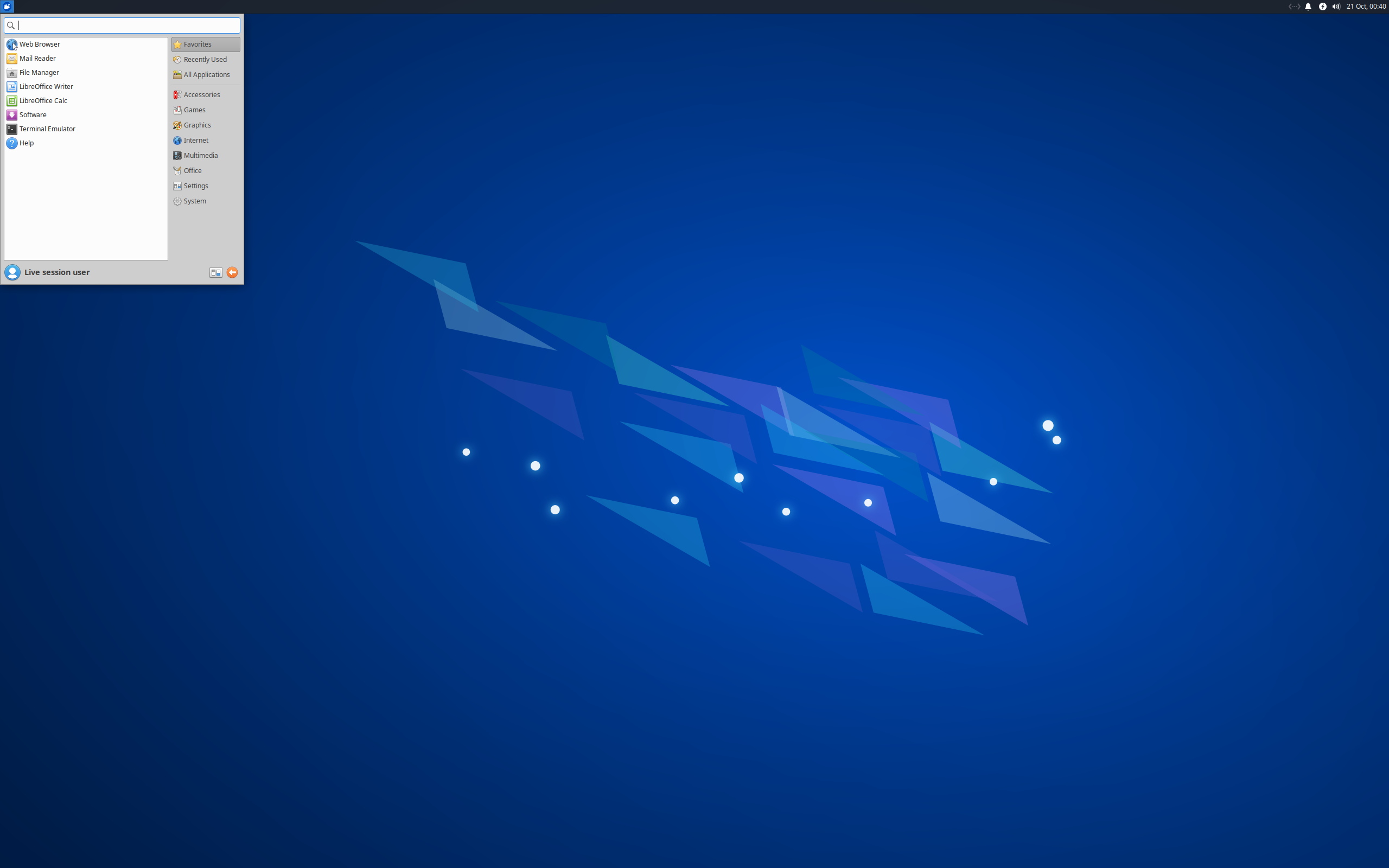
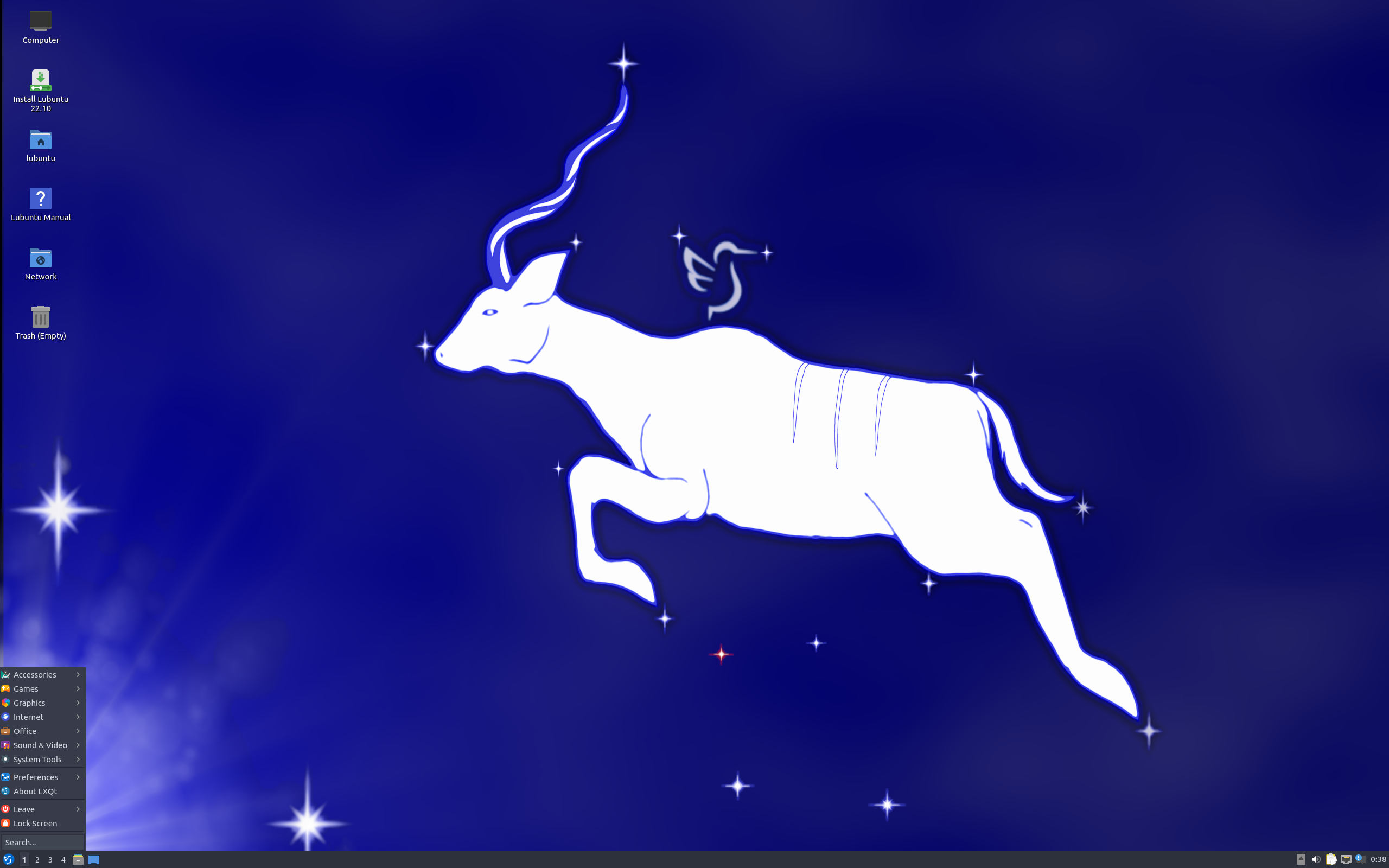
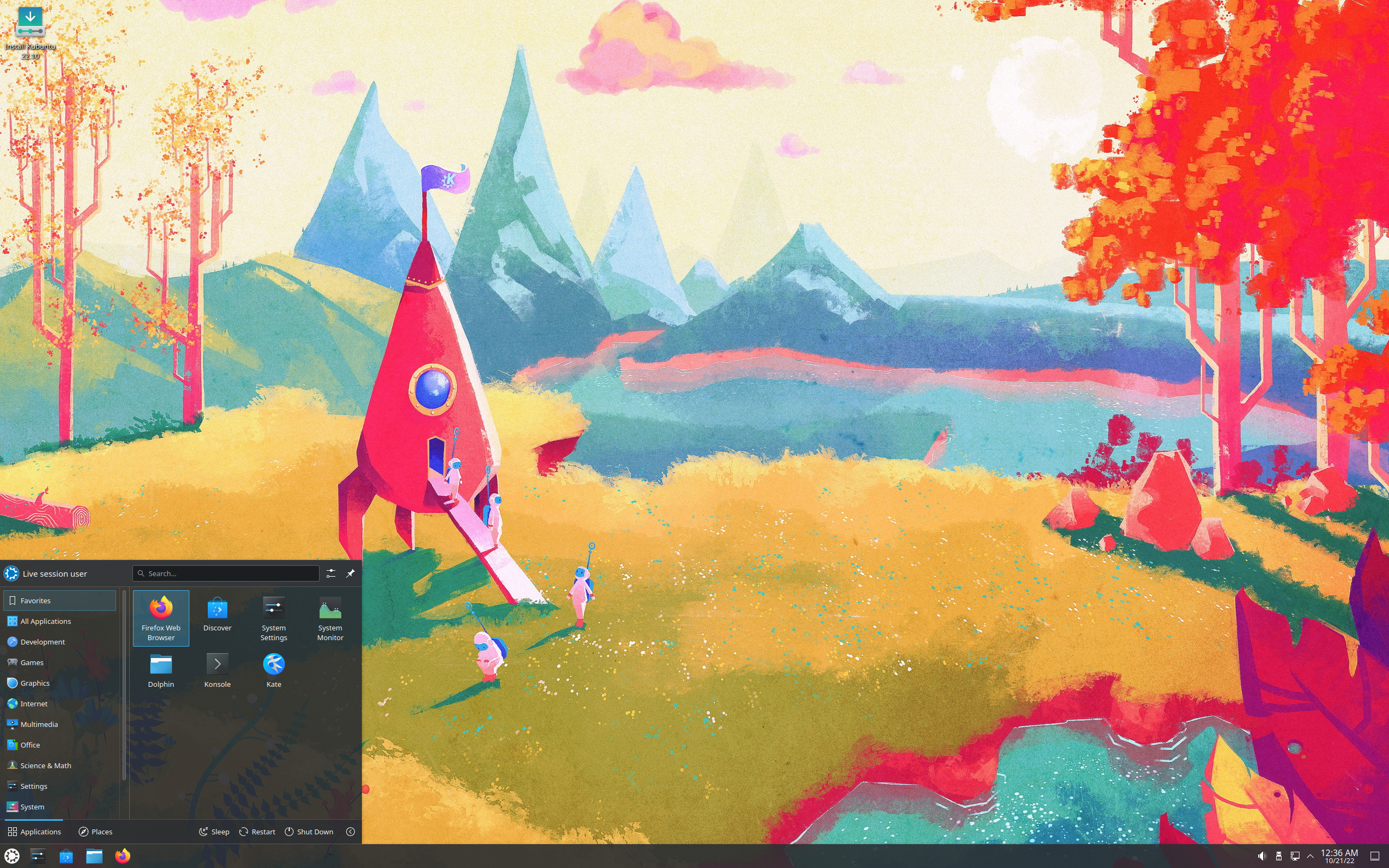
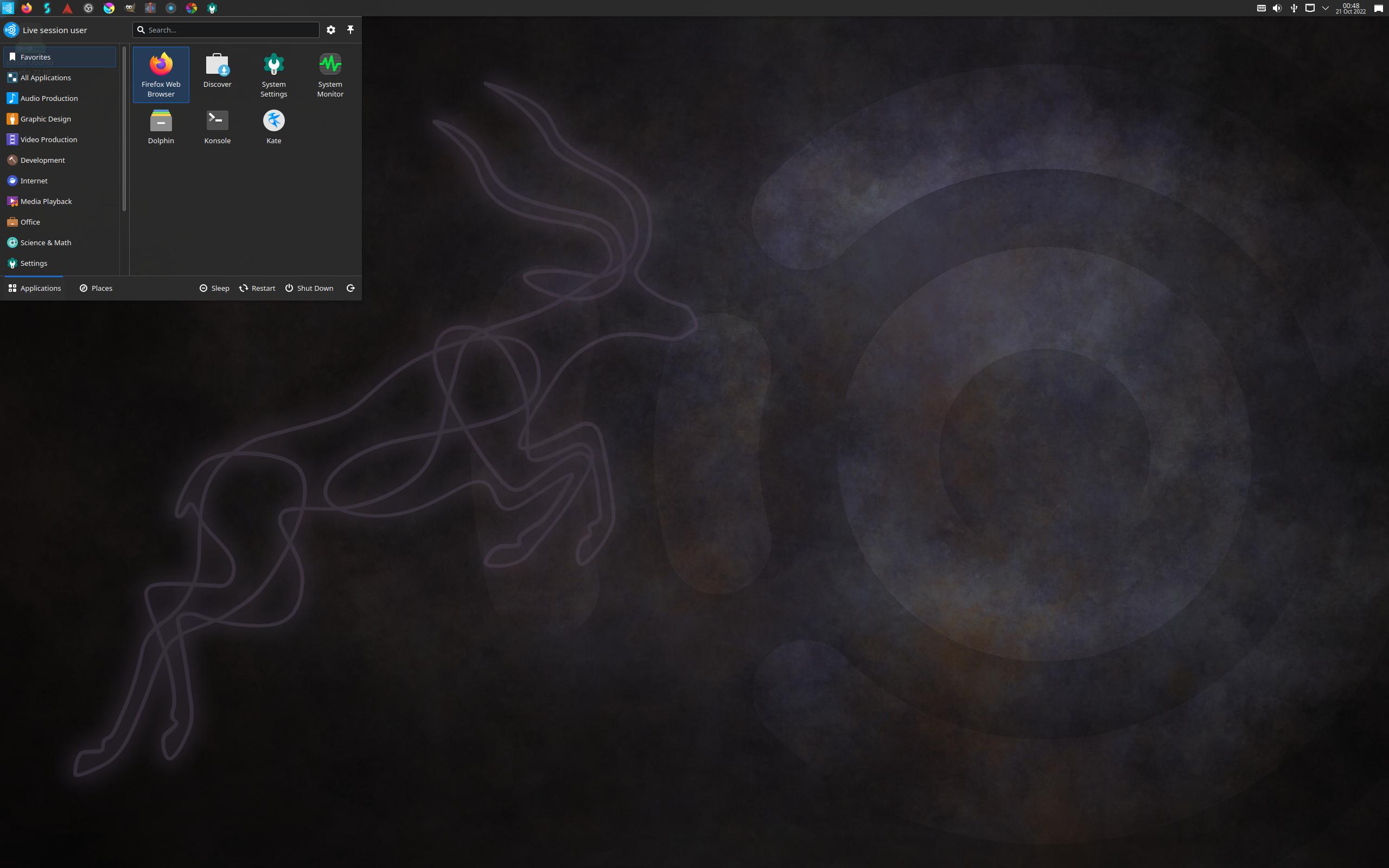
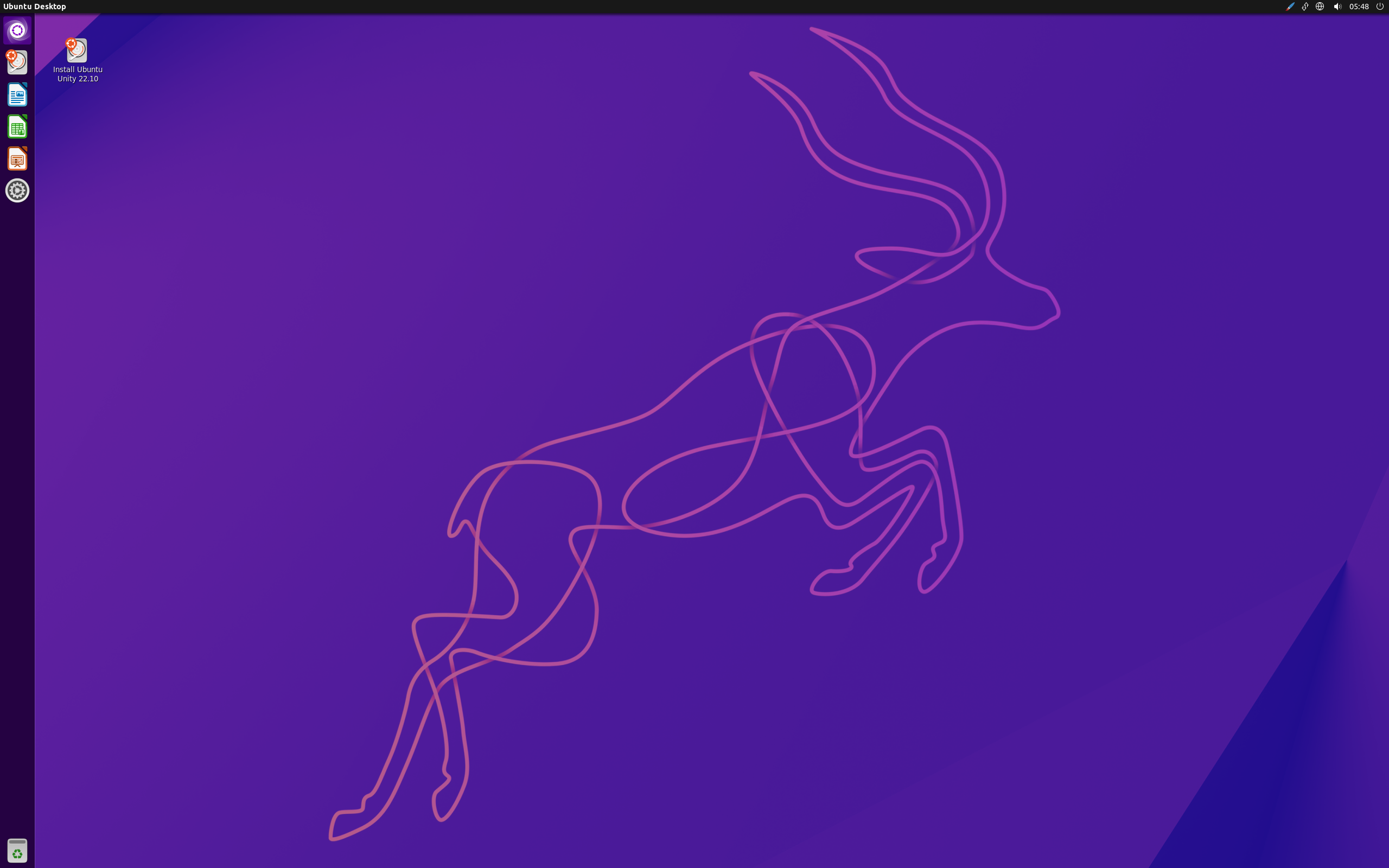
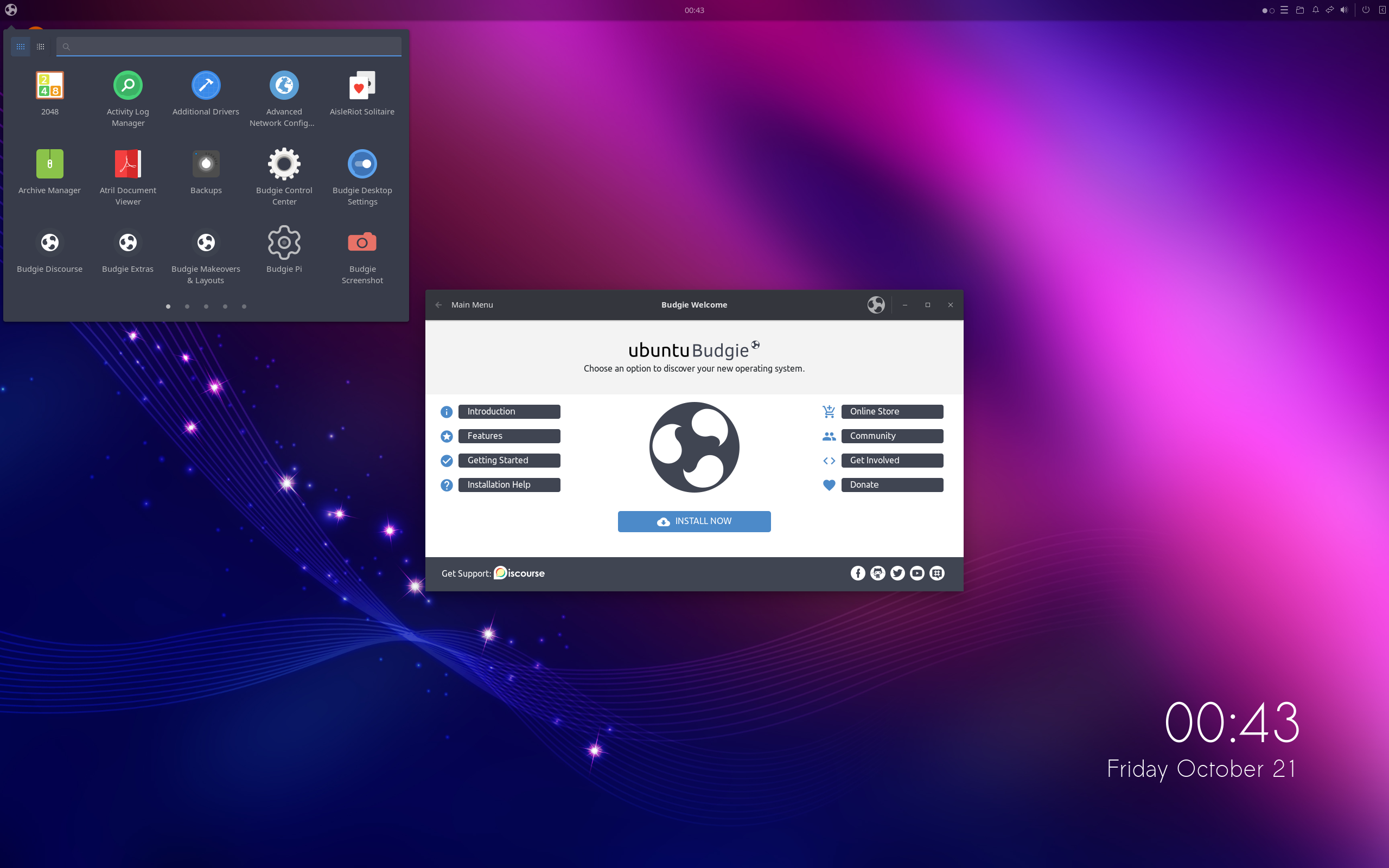




 L’azione
L’azione  L’azione
L’azione  E-books can be converted from a number of formats into whatever format your e-book reader prefers.
Many e-books available for purchase will be protected by
E-books can be converted from a number of formats into whatever format your e-book reader prefers.
Many e-books available for purchase will be protected by  The
The  L’azione
L’azione  The
The  The
The  The
The  L’azione
L’azione  The
The  The
The  The
The 

 .
.









